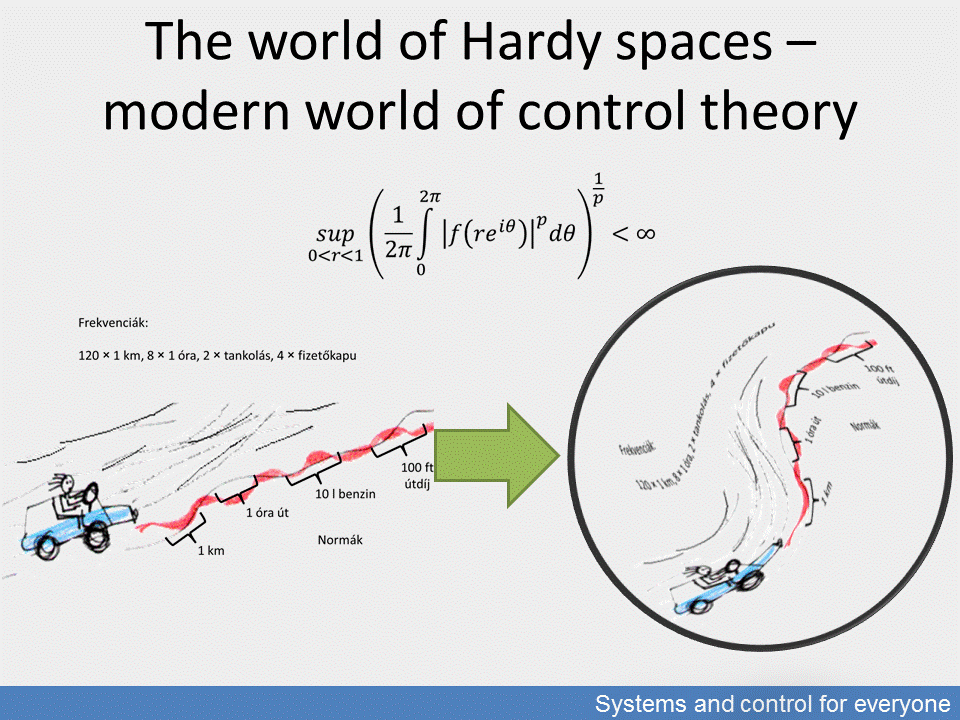

The world of Hardy spaces – modern control theory
This is the world of the Hardy spaces where the Möbius transformation ensures a well-established relationship between the representations and where factorisation in the Blaschke products leads to the practicable handling of the poles. The relative prime nature of the factorised forms enables the stability of the individual terms to affect the stability of the entire system independently of each other. This requirement is used in controller extensions which secure the quality requirements, thus, for example, in the calculation conditions of constructing the control with Youla parametrisation.
The norms of Hardy spaces provide the framework for designing the two standard controls, and thus such norms are the basis of modern control theory, including the technique of robust control. The conditions of stability are provided by the Hinf norm, and the technical setting of quality requirements by the H2 norm. Both are closely linked to the Kalman concepts of controllability and observability of systems and to the computability of the past and subsequent history of the control moment. These physical content relations interpret the relationship between the two norms and the two concepts. In most of the cases, the Hinf and H2 norms are suitable for representing our requirements; the application is selected according to the nature and calculation specifications of the task.
Mathematical representation contains Gram matrices representing covariance and their integrals calculated to the entire domain.
The calculation methods and the underlying dynamics remain the same in the case of stochastic disturbances as well, which are hardly avoidable in practice, as the linear approach enabling superposition and its differential application are prerequisites for system analysis. The disturbances are handled by filtering algorithms, which are based to a lesser extent on assumptions and to a larger extent on learning, including in particular the Kalman filter and its special adaptations.